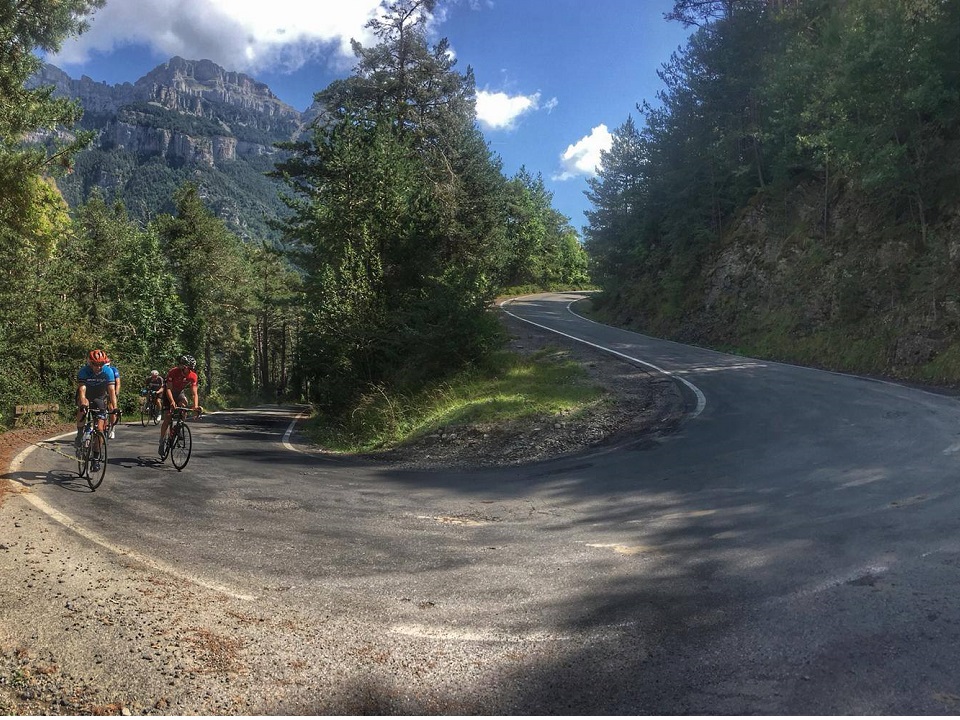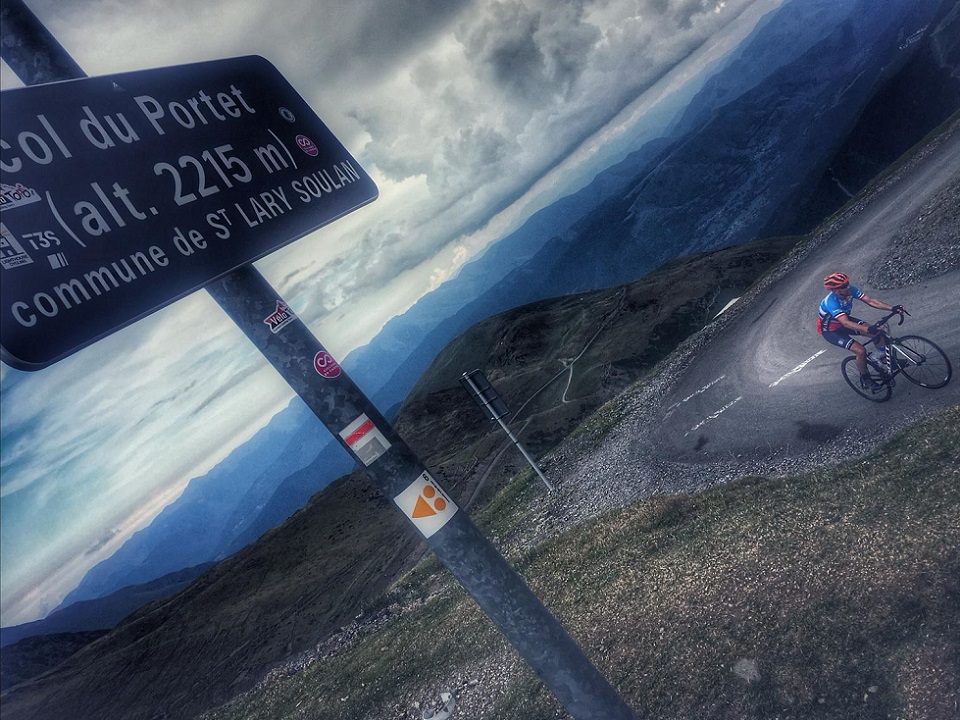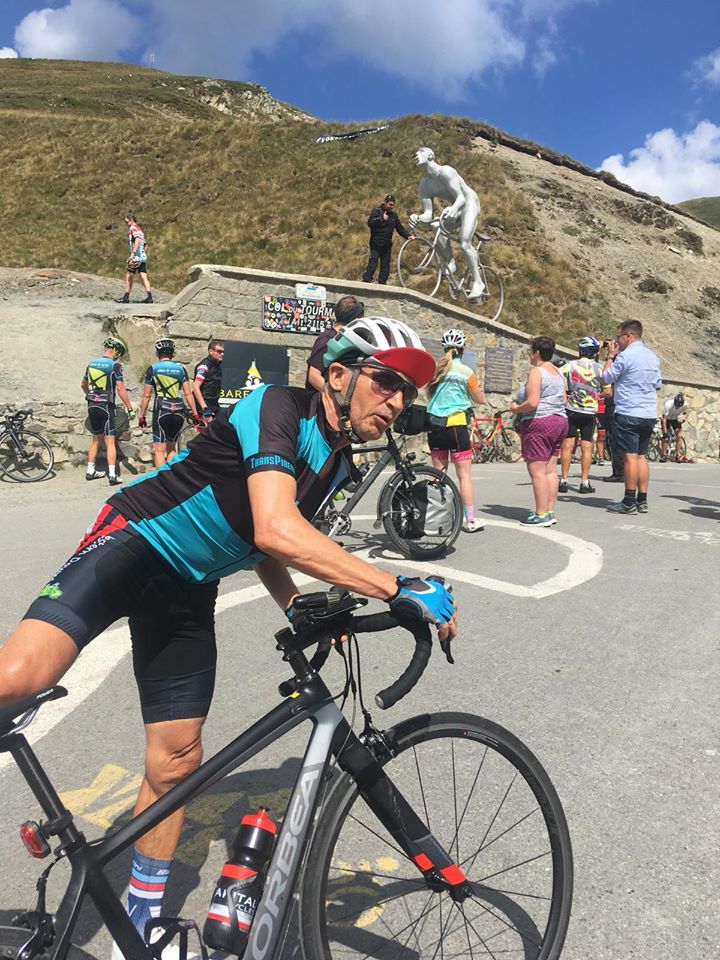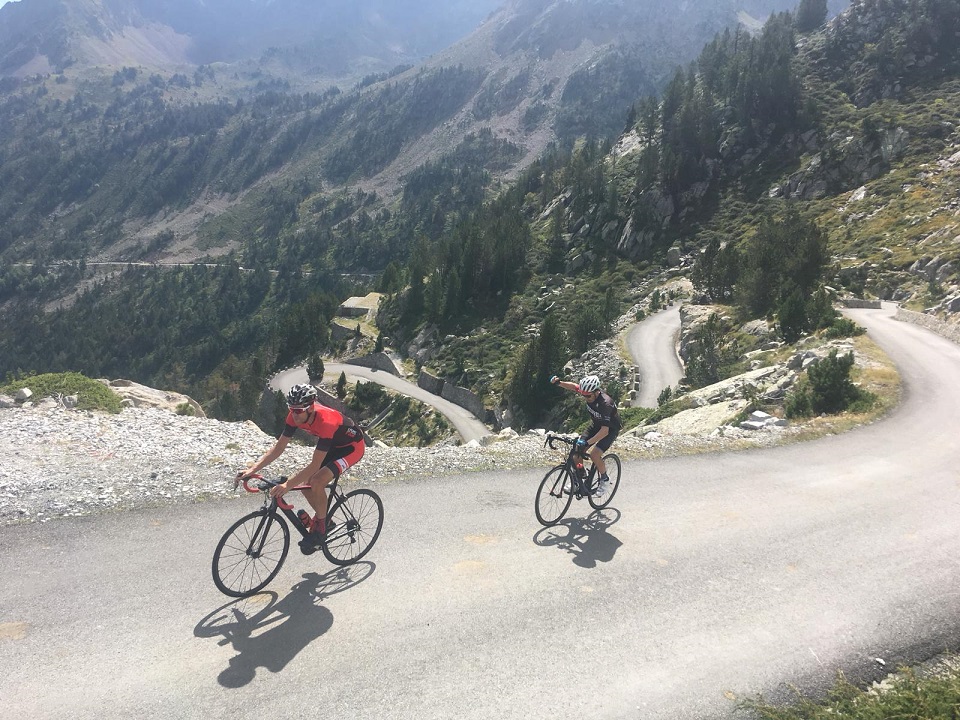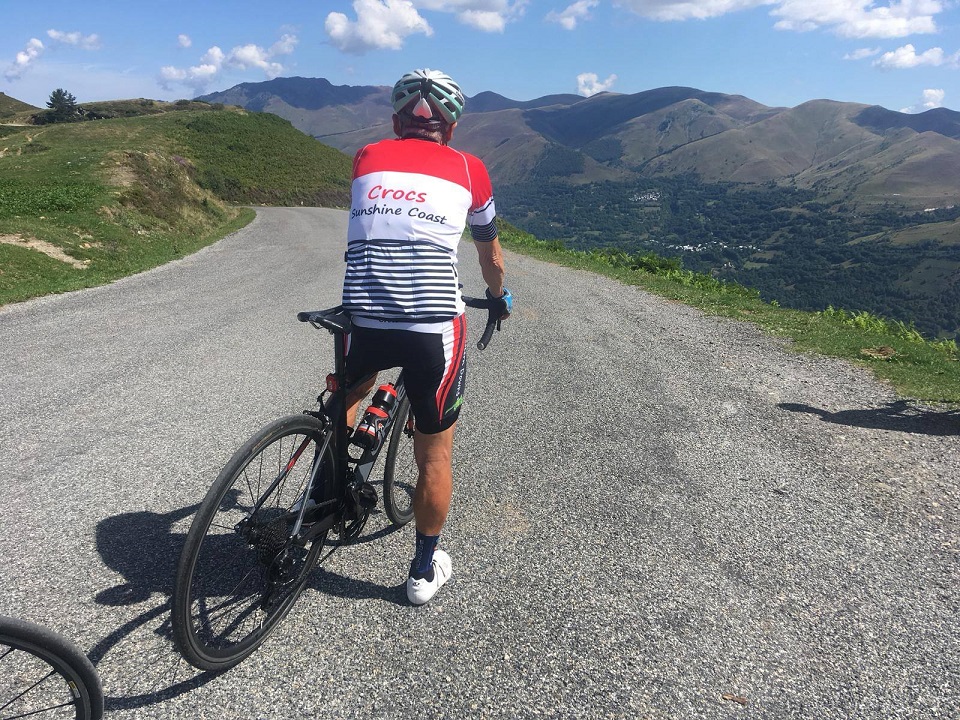The Pyrenees are a major mountain range that form a natural border between Spain and France and which also encompass Andorra a small territory with hardly a flat metre within its border! The Pyrenees mountain range spans approximately 450km between the Mediterranean and the Atlantic Ocean.
In this blog we share our road cycling knowledge on the famous ‘cols’ to be ridden, some of our favourite cycling routes including profiles and options of where to start and base your French Pyrenees cycling challenge.
What we believe makes the French Pyrenees great are the small towns, the agricultural lifestyle, the remote ‘feel’ and the mixture between truly epic Tour de France cycling cols and straight out hidden gems that Le Tour cannot access.
After looking through your geography books you will have uncovered a number of Pyrenees sub-regions and legendary road cycling peaks. The main objective of this ‘Cycling in the French Pyrenees’ blog is to focus on the major cycling challenges in the Pyrenees-Atlantiques, Haute-Pyrenees and Haute-Garonne departments. Be sure to read through to the end as we conclude by presenting a detailed list of fantastic Pyrenees cols.
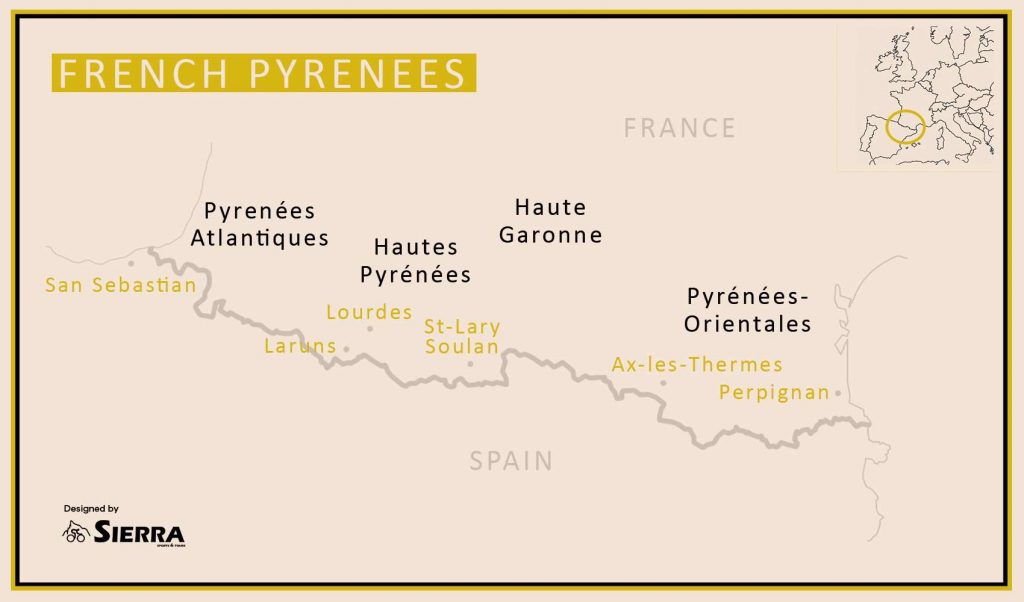
Classic Cols in the French Pyrenees
Here we present our favourite ten cycling cols from the French Pyrenees. As it goes all of these happen to be from the Pyrenees-Atlantiques and Hautes-Pyrenees departments. It was a difficult exercise but these are truly special climbs from our experience organising road bike cycling tours in Europe. A selection of other top-class climbs from these regions plus the Haute-Garonne are also described in later sections of this blog. Now to sit back and dream of cycling these French Pyrenees classic cols. This is no order of preference. Just a simple ‘west to east’ crossing of the Pyrenees mountain range.
Port de Larrau (Pyrenees-Atlantiques)
Probably a climb that most recreational cyclists have not heard too much about (and will not be high on many bucket-lists) but a climb we must feature and which we have found even more difficult than other big named climbs, such as, Tourmalet or Aubisque. Port de Larrau is located in the Pyrenees-Atlantiques region and has only featured twice in Tour de France history (1996 and 2007).
In 1996 it was rolled out for the first time as a special tribute to five time Tour de France champion Miguel Indurain. You see at the top of ‘Larrau’ you intersect the Spanish border. Big Mig is from Pamplona (Spain) and his TDF reign spanned from 1991-1995. The Stage 17 route from Argeles-Gazost to Pamplona was to be the final major climb of the 1996 tour and create a celebration for Miguel through his hometown of Vilava.
As history goes though, everything started to go very wrong for Big Mig the day earlier on Hautacam. Things then went from bad to worse on ‘Larrau’ as he was unable to keep up with the Rijs/Ulrich Telekom train and there was no party in his hometown. Finally, he slipped to 11th overall and his TDF rule was ended. It was a fabulous run though from 1991-95 and you can click here to read about our Sierra clients riding with Miguel Indurain in the Pyrenees back in 2012.
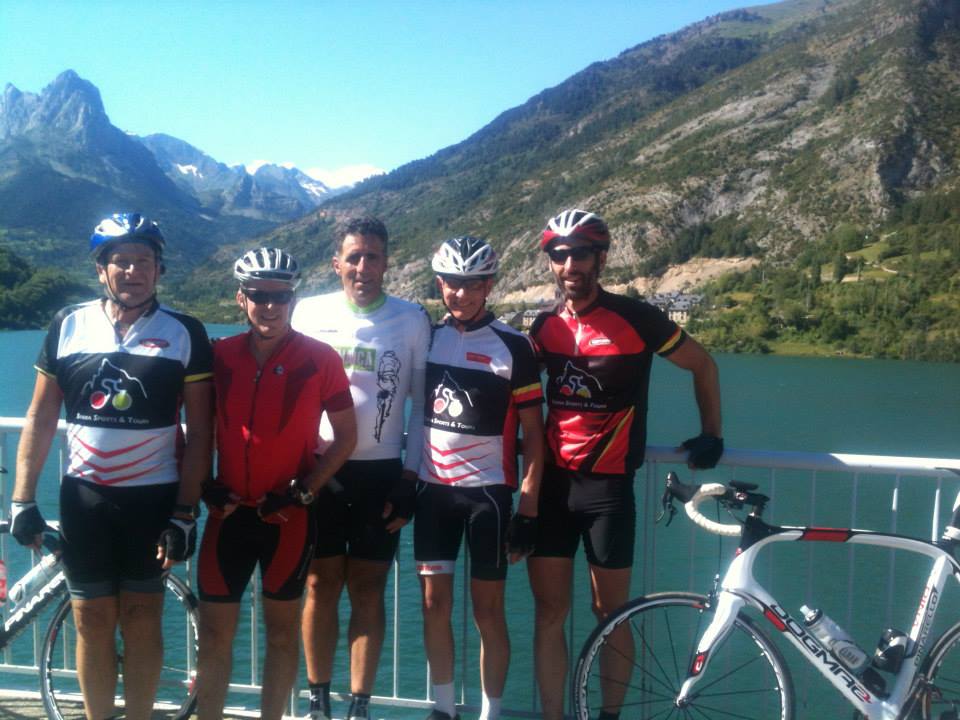
Returning to the ride statistics and Port de Larrau from the French side measures a total of 14.8km with an 8.1% average grade. Riding this approach though means you first pass Col de Erroimendi after 10.3km (9.4% average grade with at least eleven pinches with ramps between 12-16%. The following 3km average an easy 2% before a final 2km test (10% average) up to Larrau and the French/Spanish border. A great summit, remote, practically free of traffic and which opens up the Spanish Pyrenees for those who are looking for a different type of Pyrenees cycling experience.
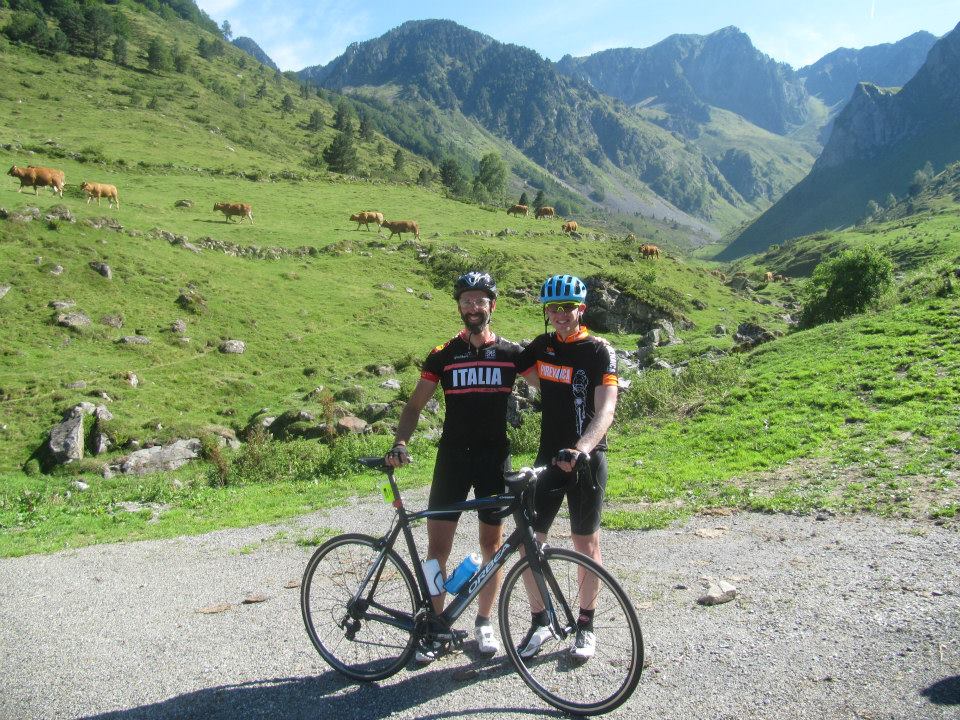
Col de la Pierre San Martin (Pyrenees-Atlantiques)
A big challenge awaits for those who are game with this 25km climb at 5.5% average grade. Rising out of the sleepy town of Arette you know there is something rather special awaiting. As you get yourself prepared there is a wall dedicated to about 15 local professional cyclists from various generations.
This climb follows the main N302 all the way up to the summit and was the route selected when Chris Froome won the Stage 10 summit finish during the 2015 Tour de France atop Col de la Pierre San Martin! The only other Tour de France summit finish was in 2007. Another relatively unknown climb just got put on the map on the French/Spanish border.
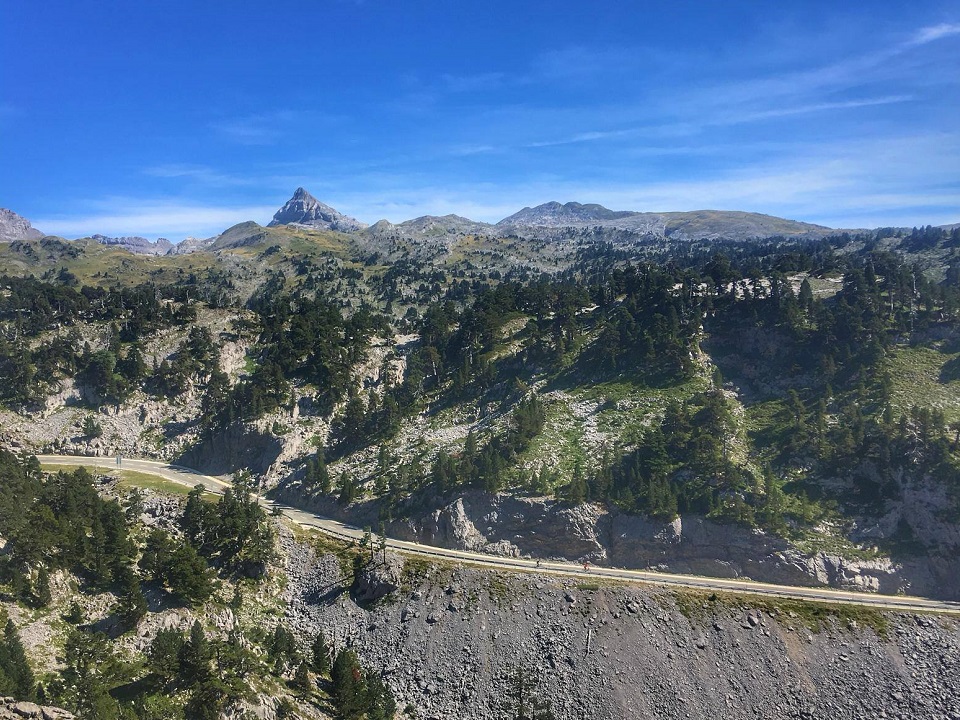
But what makes this area a small goldmine for road cycling purists is the 7 ascents from the French side which all in one way or another make their way towards this French/Spanish border summit. Drawing a 25km radius around Arette and you can find all of the 7 approaches that eventually lead one up to Col de la Pierre San Martin (1766m elevation). Town names, such as, Osse-en-Aspe, Issor, Lourdis-Ichere, Licq-Atherey, Sainte-Engrace and Lanne-en-Baretours should be stored away for when planning your cycling holiday in this region.
For a serious challenge we like the climb from Lanne-en-Baretours. The initial 12km finishes atop Col de Issarbe (1455m elevation, 8.5% average grade) and include no less than 10 ramps between 12-18%. Some energy has already been expended and you are only half way! Continuing on and Col de Soudet is greeted at the intersection of the previously mentioned main N302 road. Now it is only 3.7km to the Col de la Pierre San Martin summit on the French/Spanish border. It is interesting to note that we have found reference to Col de Soudet during the 1987, 1991, 1995 and 2006 editions of the Tour de France.
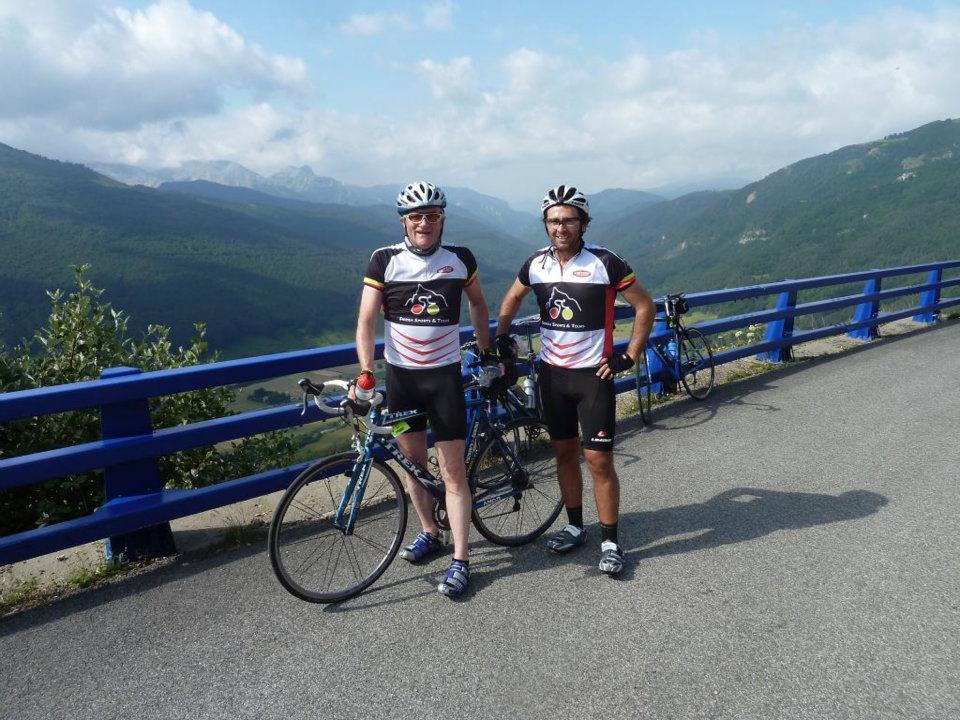
Col de Marie Blanque (Pyrenees-Atlantiques)
Next stop is Col de Marie Blanque with 30+ TDF crossings! The climb from Escot (western approach) does not need too much of an introduction. It is short but also very sweet as was perfectly demonstrated during Stage 9 of the 2020 Tour de France. This was the first moment that we knew Tadej Pogacar was a real contender for the yellow jersey.
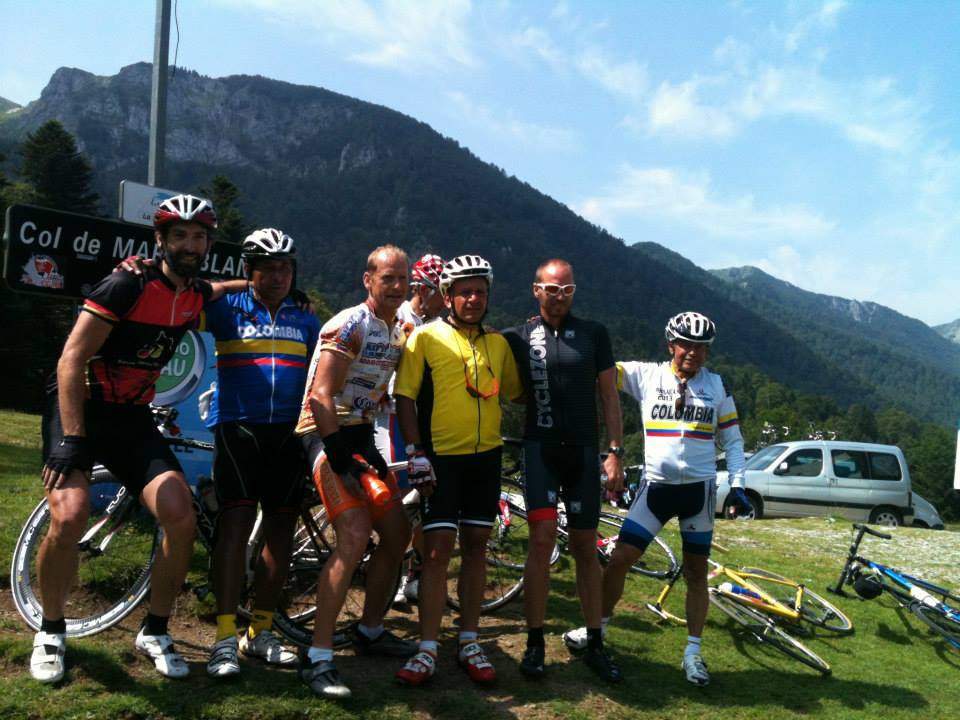
The Marie Blanque climb from Escot measures 9.4km and rises at an average grade of 7.5%. The average grade though does not depict the nature of the climb at all. If you can remember plotting exponential functions at secondary school then you will get what I mean. The initial km’s range between 2-4%, the middle sections between 5-6% before the final onslaught which includes 3km at 11.5% grade!
It is also a difficult climb to pace because all the while you are covered in thick forest and you never see more than a few hundred metres of road in front of you. Where is the top you keep on telling yourself! With the relatively straight forward start it is easy to get into a false sense of security before blowing up on the finish. I think we all saw this first hand when Pogacar and Roglic almost overlapped wheels on the Marie Blanque summit during September 2020. A lack of concentration from the effort exerted nearly left them both on the tarmac.
If all of that sounds a little too strenuous then the climb from the east is 11.5km long and it’s friendlier 5% average grade hides no monsters.
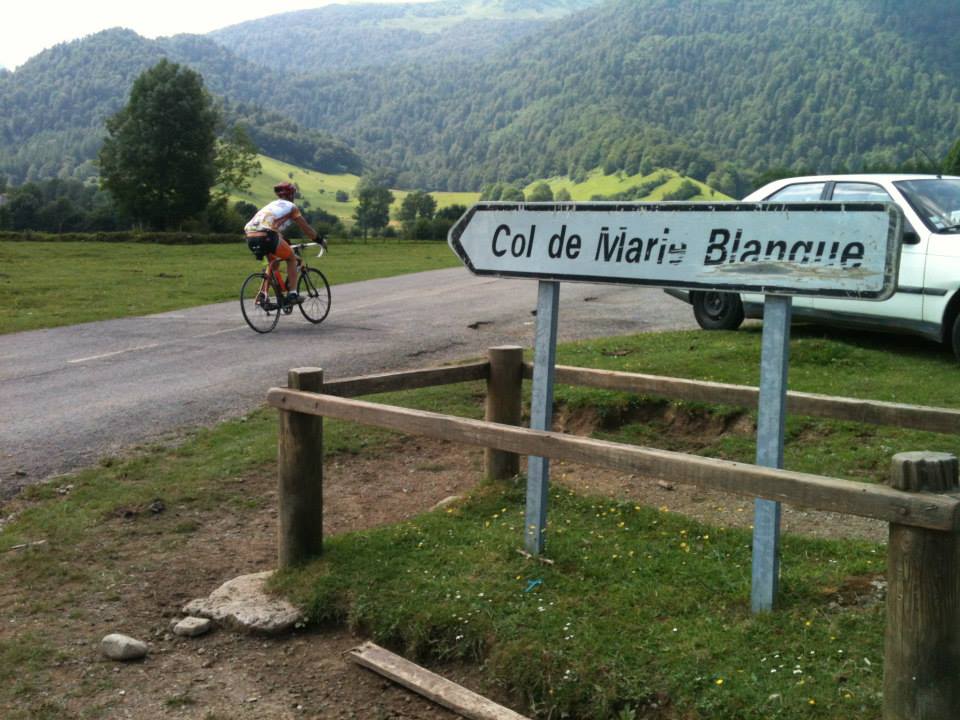
Col d’Aubisque (Pyrenees-Atlantiques / Hautes-Pyrenees)
Col d’Aubisque is a hors categorie climb which can be ridden from either the Pyrenees-Atlantiques (Laruns) or Hautes-Pyrenees (Argeles-Gazost). The Col d´Aubisque climb has been passed almost 50 times during the Tour de France making it the second or third most used climb in race history.
Most recreational cyclists attack this climb from Argeles-Gazost. To arrive at the Aubisque summit one most first pass Col du Soulor. Soulor is a cross-roads summit allowing you to continue straight to Col d’Aubisque. The road dips and corkscrews down for 2km bringing the overall climb percentage down.
What follows is the dramatic mountain road which links the Soulor and Aubisque summits. The road breathtakingly hugs the cliffs of the Cirque du Litor, passes two striking rock-blasted tunnels and is simply a cycling experience like none other. On reaching Aubisque take some time to soak up your great achievement and enjoy some fun photos with the giant TDF inspired bikes found at the summit!
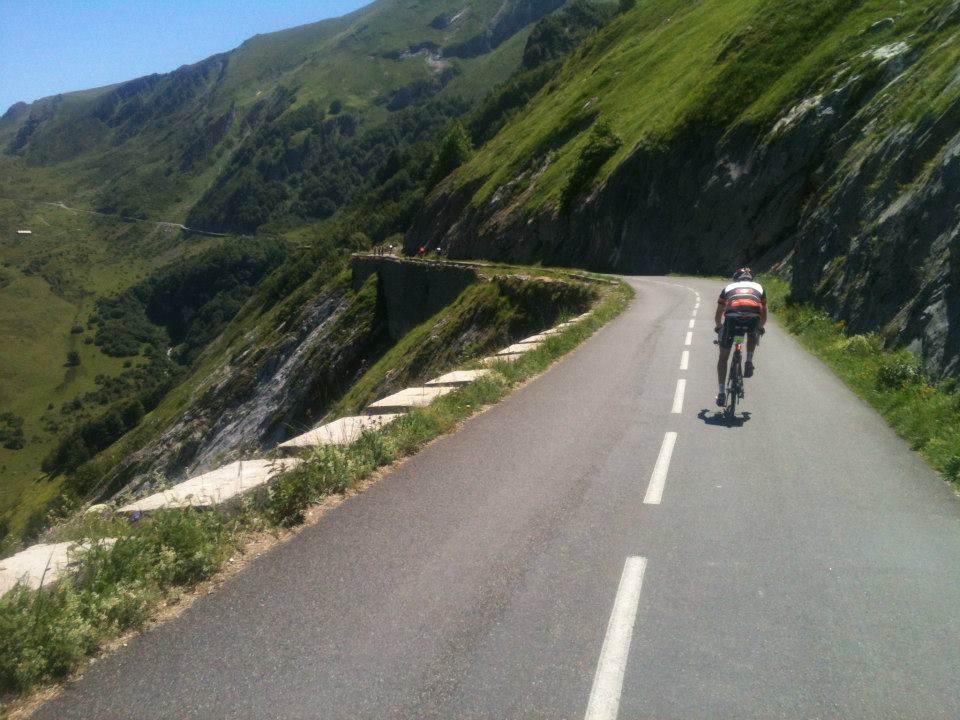
The climb from the opposite direction begins in Laruns. Usually we have scaled the toughest side of Marie Blanque only 30 minutes earlier which can make Col’Aubisque really difficult. From Laruns you encounter a 16.6km climb, 1200m of elevation gain and 7% average grade. This side of the mountain does not have the same wow factor (no vertical cliffs) as you are hidden in dense vegetation. To take this one step further the forest is also often covered in thick mist and the roads can be quite wet. From the Gourette ski station there is only 4km to the Aubsique summit. While it may be sunny at the top on many occasions we have cycled through a layer of clouds around Gourette with extremely poor visibility. Please keep this in mind that the Pyrenees must be treated with respect and always have a bike light fitted and high visibility clothing available.
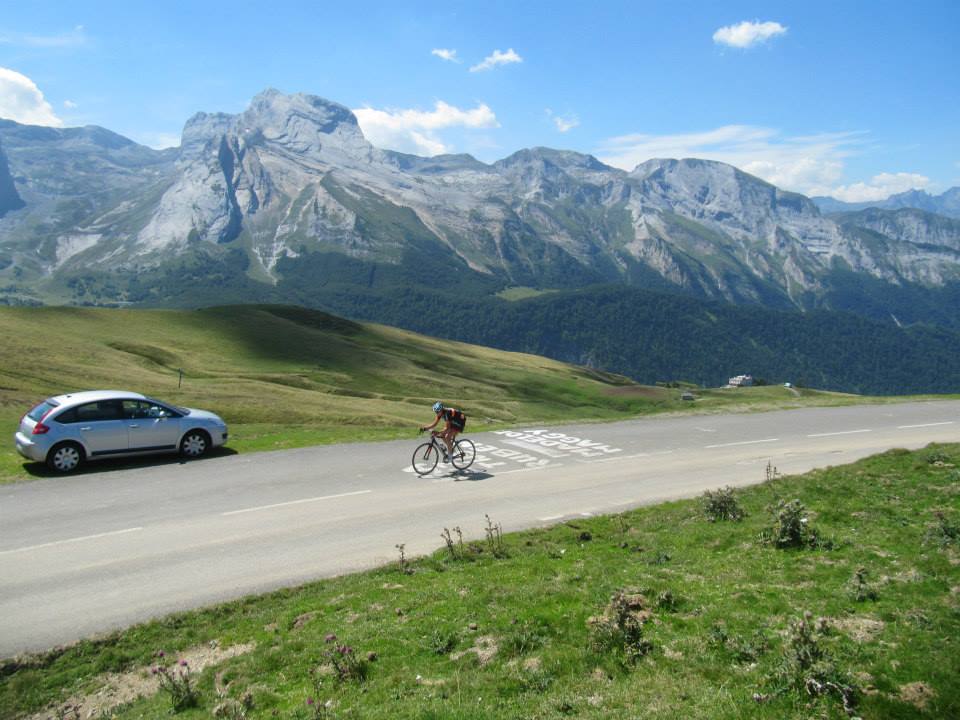
Luz Ardiden (Hautes-Pyrenees)
Luz Ardiden is a ski station which sits high above the Luz-Saint-Sauveur township. Being the end of the road it has been used as a summit finish for the Tour de France and La Vuelta a España on 8 and 2 occasions respectively. Its 14km at 7.5% average grade makes it a hors categorie climb when added as the final piece of a grand tour stage puzzle. When the initial and final 2km present gentle 5% average grades it is clear that the middle 10km are going to constantly hit 8-9%. It is a climb that has been very popular since 1985 when the Tour de France first put it on the map.
What we love about Luz Ardiden though are its 34 tight, beautiful switchbacks that hug the side of the mountain. Be sure to take plenty of photographs! When you consider that Alpe d’Huez has 21 famous bends over a similar distance, a clear day on Luz Ardiden is going to excite on many levels.
Cirque de Troumouse (Hautes-Pyrenees)
The Gavarnie National Park is best described as an oasis inside the oasis which is already the Pyrenees. Tourists usually come this far up the valley to visit Cirque de Gavarnie. This is a massive bowl-shaped mountain hollow that was the head of an ancient glacier and in 1997 it was awarded UNESCO world heritage status. It is the best known of the cirques in the region with its 6.5km diameter, its wall of 1.500 metres and the largest waterfall in Europe (427m).
But here we would like to showcase Cirque de Troumouse which is another ancient glacier which you can cycle all the way up to. ‘Troumouse’ is a gem. The climb is not one of the mythical TDF climbs as the Pyrenees National Park Authorities restrict race access to maintain the national parks pristine conditions and natural beauty!
The Cirque de Troumouse climb though is worthy of a Hors Categorie rating. The 31km climb with an average 5% gradient takes you up near the border between France and Spain. Really though it is 2 climbs in 1. From Luz Saint Sauveur you ride to Gedre. The initial 19km typically range from 2-5% average grade providing a perfect warm-up for what still remains!
Just out of Gedre it is time to veer off the main drag to the left and head in search of Troumouse. The final 12km present a number of stunning switchbacks and the most challenging part of the climb (average 7.5% grade). The Cirque itself now becomes visible and its beauty will carry you all the way to the summit!
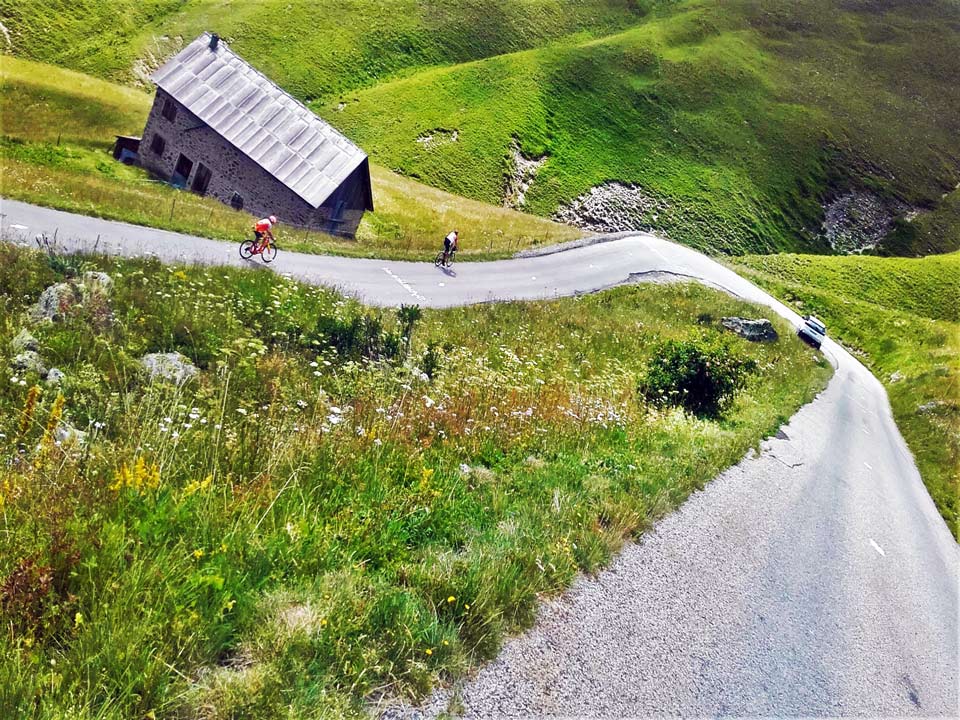
We have also already talked about Gavarnie so if you have the legs descend back to the main road, turn left and keep riding up the valley road to Gavarnie township and the end of the road. If you have some support following you lock up your bikes and be sure to take a hike to the Gavarnie Cirque. There are marmottes to be spotted! Or for those of you in for a huge day of cycling then look no further than Col de Tentes (aka ‘Boucharo’). From Gavarnie there is still a further 10km of climbing up to 2208m elevation. If you complete both Tromouse and Tentes in the one day then you will have spent a classic day out on the bikes!
Col du Tourmalet (Hautes-Pyrenees)
The Tourmalet is always a favourite amongst recreational cyclists and this cycling mecca has currently been used on about 85 occasions during the Tour de France. The climb is going to be exhilarating no matter whether you climb from the west (Luz Saint Sauveur – 18km) or from the east (Campan – 19km).
Col du Tourmalet is another tough hors categorie climb but the eastern approach has a degree of difficulty a fraction higher than the western approach. The eastern climb out of Campan has the first 2km practically flat meaning the 8% average saves some tricky back-end kilometres. These difficult sections always seem to start to kick-in just as you pass through the first of the avalanche structures. From La Mongie ski station the mountain begins to open up and the sheer rock walls and epic switchbacks start to take effect. The views from the Tourmalet summit looking back towards La Mongie have provided some of our best moments when watching the Tour de France peloton race this beautiful mountain.
A highlight for everyone is greeting the giant structure (Geant) at the summit which is dedicated to Octave Lapize the first TDF cyclist to cross the Tourmalet during the TDF over a century ago (back in 1910). The giant cycling statue rests above the narrow rock cutting and where the compulsory group and individual photos are taken!
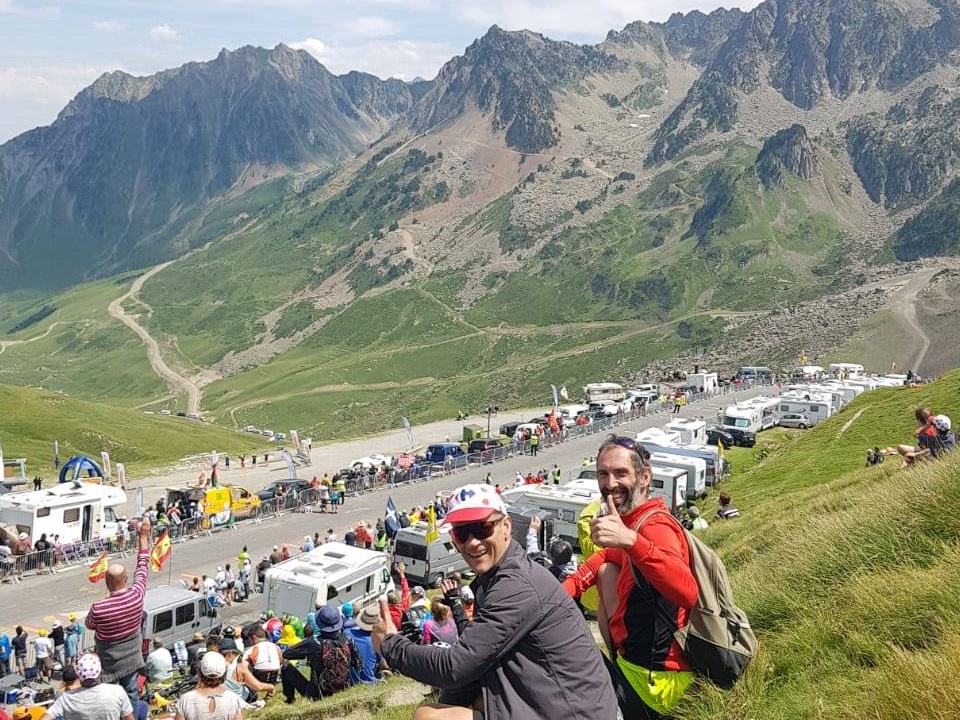
Cycling the Tourmalet from the west, on the other hand, means you will start in Luz Saint Sauveur. This is a small village which during the summer period is always lively and a great excuse for cyclists to hang-out for a beer post ride. The 18km climb at 7.5% average grade in our opinion provides the best overall Tourmalet experience. Why is that you ask? Well, if you like adventure then the chance exists to ride the ‘Voie Laurent Fignon’. Just after Bareges turn right onto the original D918 road which is open for cyclists only. Its narrow winding asphalted road still exhibit some faded TDF race markings and the views down to the valley below are simply unrivalled!
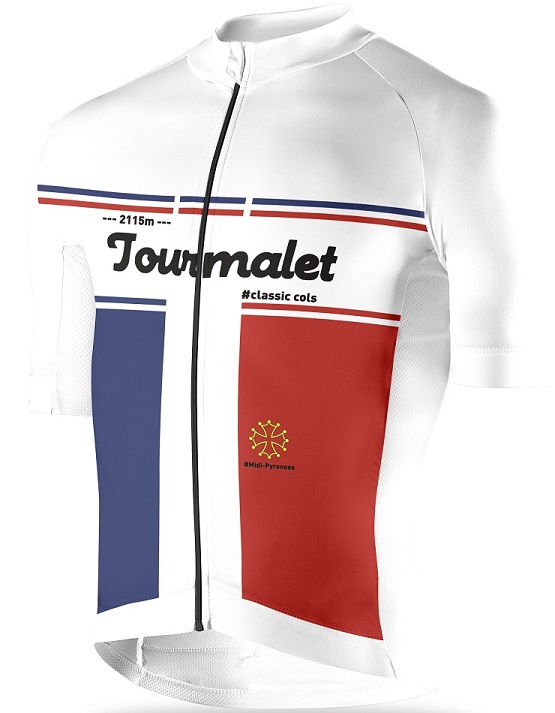
Hourquette d’Ancizan (Hautes-Pyrenees)
Ancizan is one of our favourite valleys with green lush pastures and very quiet roads for cycling. In fact, Hourquette comes from the Gascon word for farm and this road cycling detour passes by plenty of sheep, cattle and even donkeys roaming freely. For this reason, if descending the northern side towards Campan please take care of the animals and their roadside business!
It really is a climb with two totally different sets of statistics. The northern ascent from Campan includes 22.6km at 4% average grade. Please note that this includes the initial kilometres on Col d’Aspin before turning off to the right on the D113 road at Payolle. On the other hand, coming from the south and the township Ancizan the climb kicks up at a 7.8% average grade over 10.3km. If we are looking for a challenge we like to ride Hourquette d’Ancizan from the south and then Col du Tourmalet from Campan. Hitting up the most difficult sides of these two cols makes for an excellent cycling challenge!
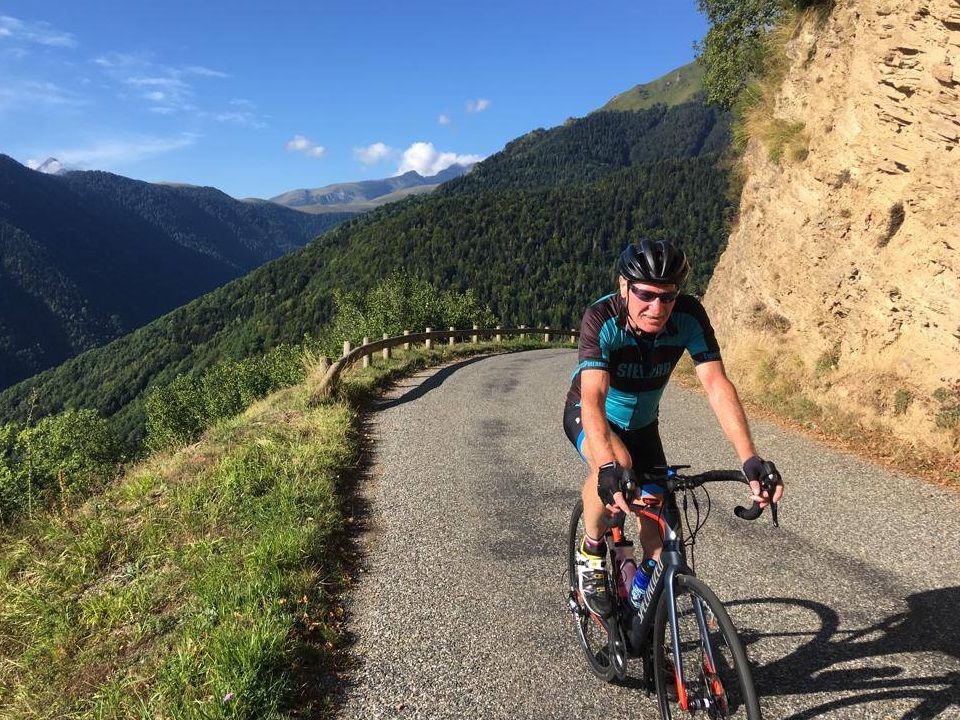
When it comes to Tour de France history this valley has only been ridden during the 2011, 2013, 2016 and 2019 race editions. Traditionally the Saint-Lary Soulan and Argeles Gazost towns were linked via the Col d’Aspin and Col du Tourmalet climb double. We think that Ancizan over the last decade has added a new dimension to Le Tour and will be used on many more occasions into the future.
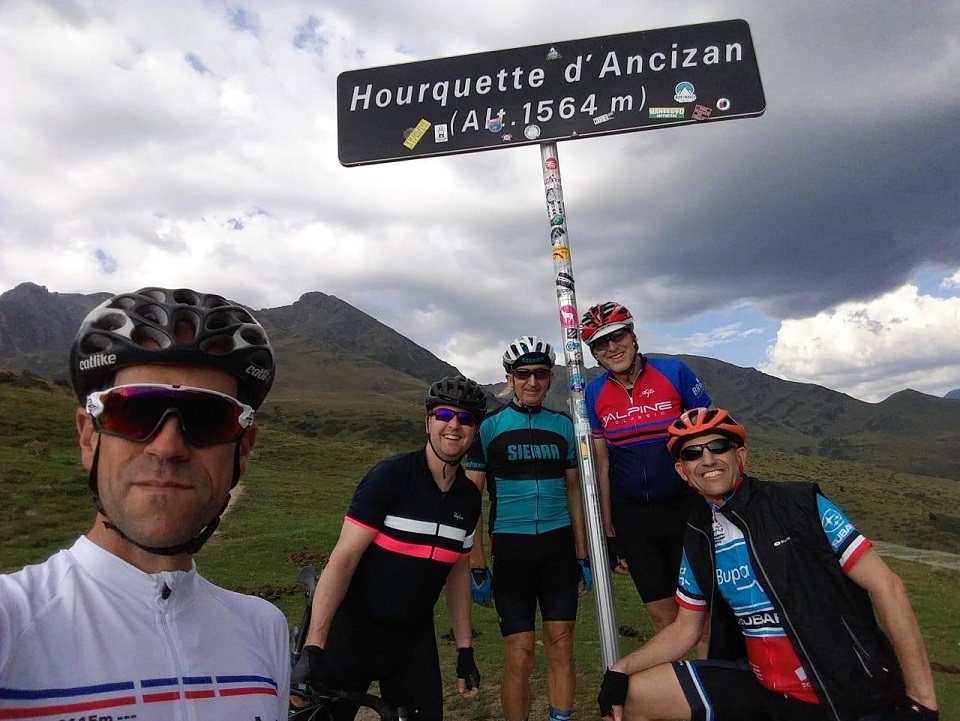
Col du Portet (Hautes-Pyrenees)
Col du Portet is perhaps now the most difficult cycling challenge in the Pyrenees. It was used for the first time during the 2018 Tour de France as a summit finish. The 16km climb at 8.7% average grade finishes at 2215m making it the highest asphalted pass in the Pyrenees. Move aside Tourmalet as Portet now owns the bragging rights!
The first 8km of the climb follow the road to Pla d’Adet ski station. The initial 4km are always hovering around 10% and need to be treated with full respect. The only reprieve comes between KM 7-8 where the gradient drops to an ‘easy’ 5%. Following this short transition to catch your breath you turn right to follow the Col du Portet signpost. Before 2018 this section was a gravel road but Le Tour brought along the roadwork crew to add some hot mix. As you pass the small tunnel it will serve as the final 1km marker and the 10% grade continues all the way to the summit!
If you haven’t seen any footage from this ‘new Pyrenees col’ then be sure to stay tuned for 14 July 2021 when it hosts the Stage 17 summit finish. From Bagneres-du-Luchon the peloton will climb Peyresourde and Val Louron-Azet before being faced with the new giant which is Col du Portet!
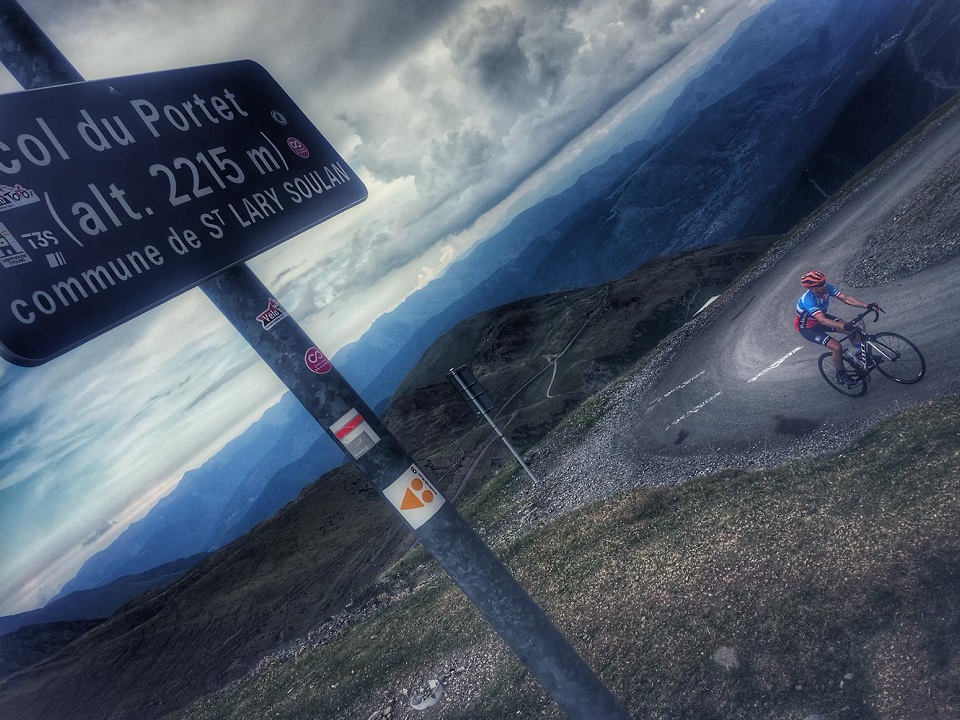
Cap-de-Long (Hautes-Pyrenees)
Not too far away from St-Lary Soulan lies Cap-de-Long yet another Pyrenees giant. Cap-de-Long is a mountain reservoir hovering at an astonishing 2160m altitude (France´s second highest reservoir). At the summit one is literally only a stone’s throw away from Spain. The Tour de France would love to have a stage finish here but the logistics just do not allow access for such a big event.
If we could ride only one col in the Pyrenees we would actually select Cap-de-Long! From St Lary you follow the main road towards Spain. This road quietly gains elevation so please keep that in mind. After about 10km you veer right and from here the col proper begins. Its statistics include 14km with a 7.5% average grade. When it comes to scenery we believe it offers the best climb for photography in the French Pyrenees. Woodlands, switchbacks and reservoirs dominate proceedings. This is one climb where you feel nature all around you during every single kilometre. Very special!
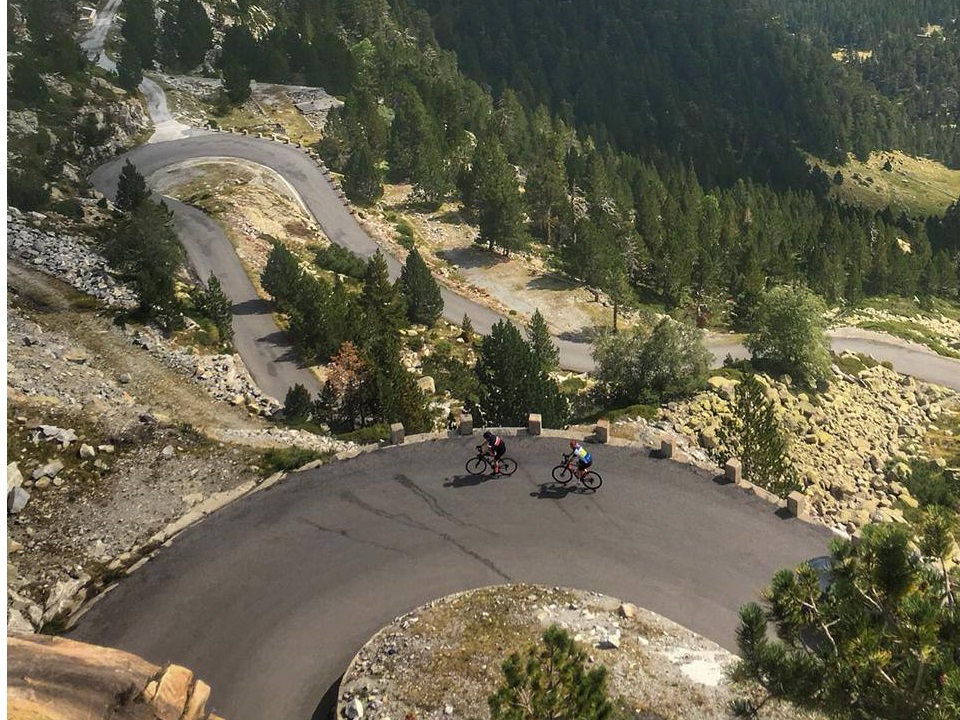
As you ride out of the forest and past the first lake the huge dam wall enters your eyeline. This is Lac de Cap-de-Long and you now have the summit in sight. There are some roadside fountains along the way which during the hot Pyrenees summer come as a welcome relief.
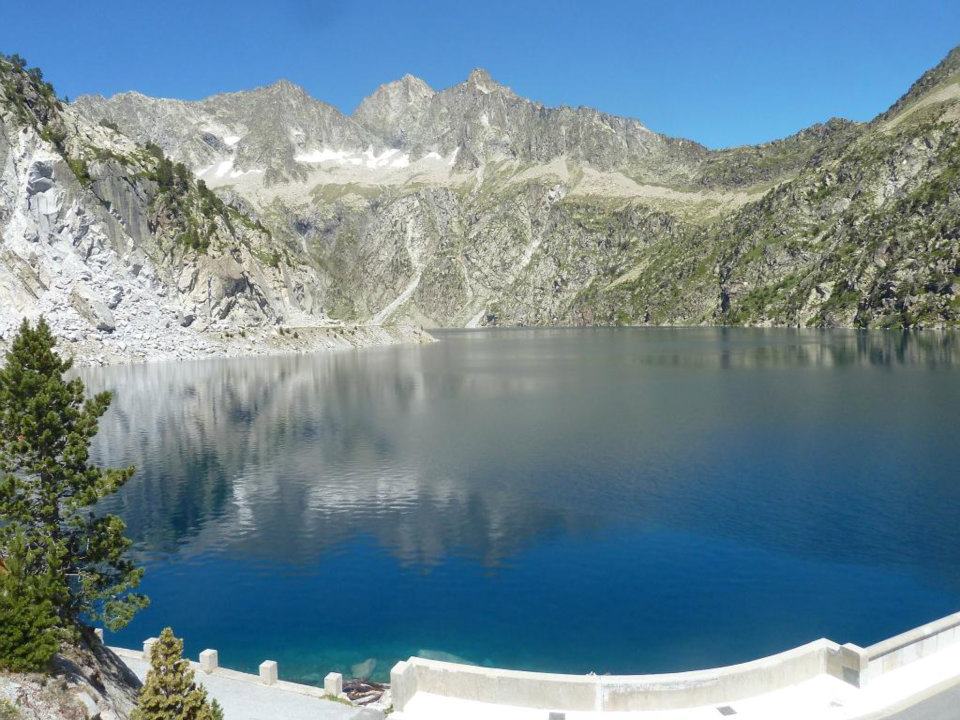
Even though the carpark at the summit is often desserted it really is a magnificent place to visit. What we like to do is descend 4km and take the left hand turn to a lower lake which is on the road to Lac d’Aumer. Here you can find a spot of grass for a picnic or to take a dip in the ‘fresh’ lake waters. If you still have some strength be sure to continue cycling up to Lac d’Aumer at 2191m elevation. It is a further 5km of climbing on a road closed to traffic so it is a very enjoyable way to conclude your ‘Route of the Lakes’.
Where to Start Cycling the Pyrenees
San Sebastian (Basque Country, Spain)
It might seem strange to kick things off with a Spanish coastal town but who does not love a bit of San Sebastian action. In our opinion, it is the perfect place to begin or conclude a cycling holiday. From ‘San Seb’ (Donostia in Basque) you will need a vehicle to easily move into the thick of the Pyrenees-Atlantiques.
Following a 2hr 15min or 2hr 30min drive you will find yourselves in Arette or Laruns respectively and at the base of some sleeping road cycling giants. Stage 10 of the 2015 Tour de France saw Chris Froome put minutes into his biggest rivals by winning at the top of La Pierre-Saint-Martin (15km at 7.4%) from Arette.
When it comes to Laruns, more recently Tadej Pogacar won Stage 9 of the 2020 Tour de France with a sprint finish in Laruns after a select group battled out the ‘hellish wall’ which is the western side of Col de Marie Blanque. At the exit of this sleepy township you also have the choice of either Col du Pourtalet or Col d’Aubisque which rise up for what seems like an eternity before reaching their respective summits!
Toulouse (France)
The fabulous city of Toulouse will probably be the most likely point of entry for most travellers looking to collect cols in the French Pyrenees. It is located within the Midi-Pyrenees department and from Toulouse Blagnac International Airport there is a 2hr drive to Lourdes in the Hautes-Pyrenees.
From Toulouse Blagnac Airport there is a 20 minute shuttle bus to the Toulouse Matabiau Gare SNCF bus stop. From the bus stop it is just an easy few minutes walk to Toulouse Matabiau Train Station and now in as little as 1hr 45min there are train options to Gare de Lourdes.
Lourdes (France)
While most of the flights coming into Tarbes-Lourdes-Pyrenees Airport are charter flights (pilgrim focus) there are still some internal European passenger flights available. TLP Airport is located only 15km north of Lourdes. At the time of writing we understand that there are Air France, RyanAir, TUI and AlbaStar flights to Lourdes from destinations such as Paris-Orly, Dublin, London Stansted, Bergamo, Milan and Lisbon. Please double check directly with these airlines though as flight offerings are limited and can be very seasonal.
Gare de Lourdes is also a location where we have collected and said our goodbyes to many clients who have cycled with us in the French Pyrenees. Lourdes is on the TGV fast train lie between Paris Montparnasse and Tarbes. The fast train from Paris takes approximately 5hr while if you were to jump on from Bordeaux it would be closer to 2hr 30min through to Lourdes.
Where to Stay when cycling in the Pyrenees
Argeles Gazost the heart of the Hautes-Pyrenees
Argeles-Gazost is located in the heart of the Midi-Pyrenees and is a brilliant location to start any mountain experience. You will always find a place to sleep in nearby Lourdes but for cyclists we would have to recommend Argeles.
Argeles-Gazost is a quaint little town and an amazing cycling base with famous Tour de France routes at every corner. To name a few cols and you have access to Soulor, Aubisque, Spandelles, Hautacam, Luz Ardiden and Tourmalet.
We have already talked about the Soulor/Aubisque double. But from Argeles you can also ride Col du Spandelles, descend and later turn left and head back up to the Solour/Aubisque junction. This is a challenging loop ride as the Soulor climb following the road from Pau does get steep in place.
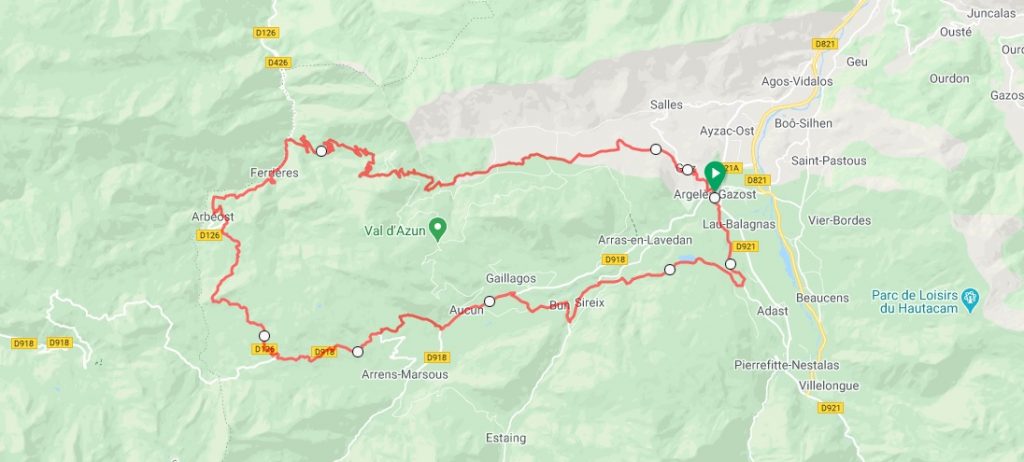
From Argeles it is also possible to follow the designated bike path to the ´Gorges de Luz´ entrance. This gorge is a spectacular 10km section of road steeped in Tour de France history as it connects the Soulor / Aubisque and Tourmalet / Luz Ardiden climbs.
The Hautacam is another classic climb on the outskirts of Argeles. It is not as beautiful as some of the other climbs but geez it’s tough. On a clear day from the valley floor you can see the towering Hautacam ski station. Many believe it is the toughest climb in the midi-Pyrenees region! Now that is saying something when it competes with Tourmalet, Luz Ardiden and Aubisque! The 13.5km climb averages 8% but the damage is often done during Km 8 -10 where the grade does not drop below 10%. We will always remember Vicenzo Nibali and his solo effort during Stage 18 of the 2014 TDF to take line honours on Hautacam!
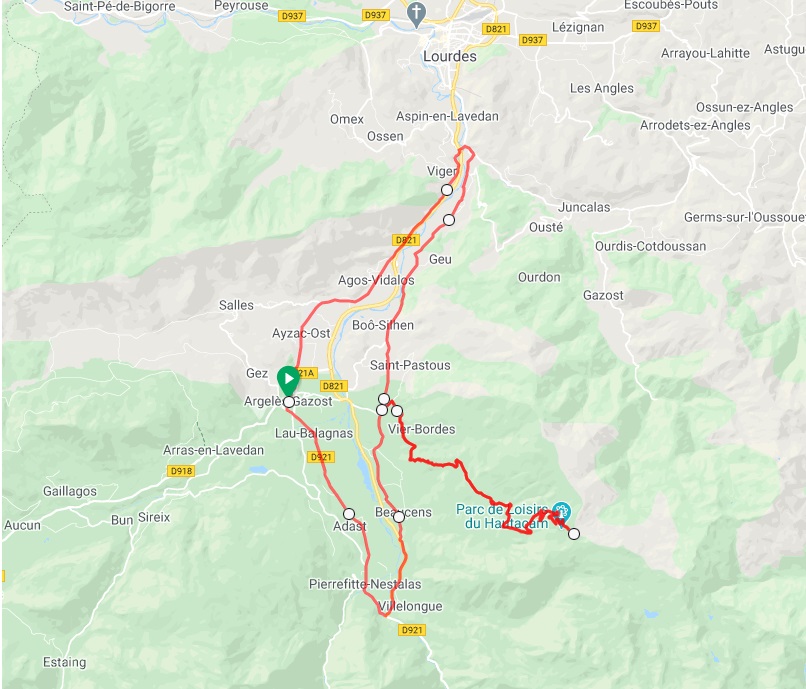
When you arrive at the large parking area at the Hautacam summit it is good to know that Col de Tramassel also exists. This is a 1.5km add-on which is worth the effort.
Another adjacent town to consider is Saint Savin. It is a sleepy village that is very well set up with a number of bike friendly accommodation options.
Saint-Lary-Soulan
St Lary is one of our favourite French towns with its pretty ‘centre ville’ and exceptional access to outdoor sports. With mountains to climb in all directions it is the perfect base for road cyclists! If you are keen to tick-off a number of the big cycling cols then this is your place. Pla d’Adet, Col du Portet, Col d’Azet, Col du Peyresourde, Cap d’Long, Piau Engaly, Col d’Aspin and Hourquette d’Ancizan …..
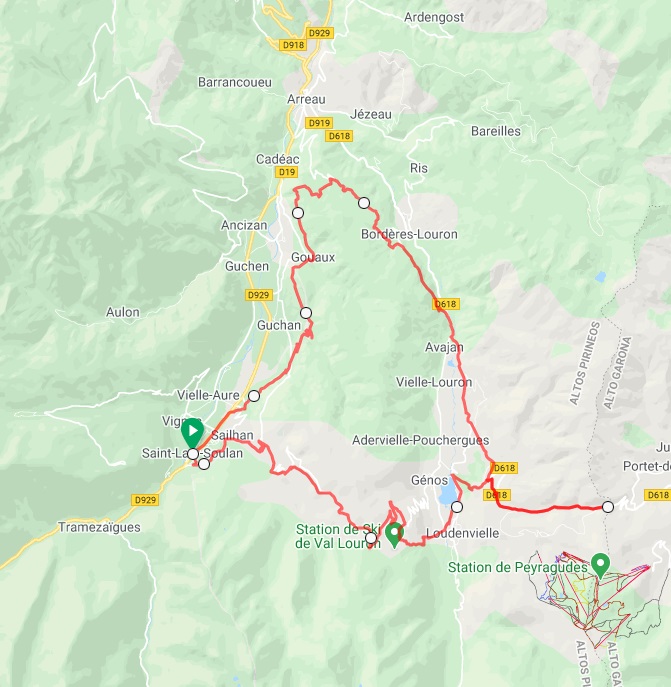
Bagneres-du-Luchon
This Pyrenees township is famous for its thermal waters. It is located close to the Spanish border and is a regular feature in the Tour de France. There are some quality cols all around and some of our favourites include Col du Portillon, Superbagneres, Col du Peyresourde and Port de Bales.
Col du Portillon is on the France/Spain border and if you are descending down into Bagneres please take some care. We believe it is one of the most technical descents in the Pyrenees. Adam Yates was all alone and set for his first TDF stage win before crashing out heavily during Stage 16 of the 2018 TDF.
Many classic Tour de France stages also link between Saint-Lary-Soulan and Bagneres-du-Luchon. These towns play a vital part in Le Tour and the Col du Peyresourde climb is a regular feature. Cycling Col du Peyresourde from Bagneres provides some epic switchbacks in the final 2km. Just when you think you are at the summit the switchbacks seem to take you further away again! Spectacular views are on offer from all vantage points and the chance to stop for a well earnt crepe atop Peyresourde awaits!
List of Epic Cols in the French Pyrenees
Moving from west to east along the Pyrenees mountain range and here is a list of cycling cols:
Pyrenees-Atlantiques: Col de Marie Blanque, Col de la Pierre Saint-Martin, Col du Somport, Col d’Aubisque and Port de Larrau.
Hautes-Pyrenees: Col du Tourmalet, Col du Soulor, Hautacam, Luz Ardiden, Col de Tentes, Cirque de Troumouse, Pont d’Espagne, Col de Spandelles, Col d’Aubisque from Argeles-Gazost, Col des Borderes, Col de Couraduque, Hourquette d’Ancizan, Col d’Aspin, Col de Peyresourde from Arreau, Peyragudes, Col du Portet, Pla d’Adet, Col de Val Louron-Azet, Piau-Engaly and Cap-de-Long.
Haute-Garonne: Col du Peyresourde from Bagneres-du-Luchon, Port de Bales, Col du Portillon, Superbagneres, Col de Mente and Portet Aspet.
Ariege-Pyrenees: Port de Pailheres, Ax-3-Domaines, Col d’Agnes, Col de la Core, Col de Latrape and Col du Chioula. This is quite a small region and has not been covered in this blog.
Pyrenees-Orientales: This region is often referred to as the Pyrenees-Catalanes and is the most eastern region of the Pyrenees. This zone, like the Ariege-Pyrenees, has not been covered in this blog.
Andorra: An interesting side note surrounds Port d’Envalira which is 5km within Andorra from the French border and which rises to 2409m altitude actually making it the highest asphalt pass in the Pyrenees! Again, not covered here but well worth a Andorra cycling blog feature for a later date.
Other road cycling blogs
10 Best European Road Bike Loop Rides
Cycling Europe’s Highest Asphalted Road

